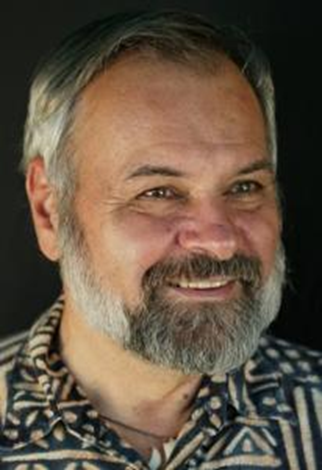AARP Hearing Center

In recent newspaper editorials there have been references to the contribution of energy storage to the energy portfolio of the U.S. Virgin Islands. I support this discussion. Energy storage enables the USVI to become almost entirely independent of fossil fuels by2025.
It is important to understand that there are different types and scales of energy storage and we need two major types of energy storage to maximize penetration of non-baseload renewable energy resources – such as wind and solar – into St. Croix and St. Thomas/St. John grids.
Energy storage involves technologies that store energy for future use. Some technologies (capacitors, periods flywheels, batteries) store relatively small amounts of power (kilowatts to 10s of megawatts) for short periods (microseconds to minutes). Others – flow batteries, compressed air, pumped hydro – store greater amounts of power (tens of MW to gigawatts) for longer periods (hours to days).
The reason energy storage is important to the USVI renewable energy discussion is that wind and solar energy are variable. Without storage of solar energy, you cannot turn on a light bulb or run a refrigerator at night. Likewise you cannot run an air conditioner off a windmill when the wind stops blowing. Storage is needed at two levels to accommodate wind and solar energy on a grid. First, low-amount, short-term energy storage can smooth the input of energy onto the grid over a course of microseconds to minutes to protect and stabilize the flow of energy on the grid. Batteries, capacitors and flywheels perform this service very well.
The second kind, or “bulk” type, energy storage has been generally missing in the USVI discussion until recently, and is critically important to maximize use of the vast reserves of wind and solar energy that reach our islands. Theoretically, solar energy could provide 100 percent of our energy needs if we could store all the energy needed to get through the night, accounting for low insolation (incoming solar radiation) when the sun is low in the sky or behind a cloud. Likewise for wind energy, if we accounted for variability in wind direction and speed.
But to store all the solar and wind energy needed to meet 100 percent of energy demand 24/7/365 would require a large and very costly energy storage capacity.
A cost to USVI residents resulting from failure to include bulk storage in our energy portfolio is a lost opportunity for installing solar photovoltaic or wind turbines at our homes and businesses without going completely off-grid. The sign posted on the St. Croix DPNR Division of Building Permits door reads: “We Are No Longer Accepting Net Metering Applications Until Further Notice – Management.” DPNR has also stopped issuing net metering permits on St. Thomas.
We learned from National Renewable Energy Laboratory presentations at Energy Development in Island Nations conferences that without being interconnected to a larger grid, such as Puerto Rico, there is a “cap” on the amount of non-baseload energy (wind and solar) that can be delivered to WAPA grids. In Act No. 7075 the V.I. Legislature set a five MW limit for distributed energy for net metering on St. Croix and a 10 MW limit on St. Thomas/St John. If we have exhausted this 15 MW so quickly, it illustrates the strong market for distributed energy – a market WAPA should further embrace and support, not curtail. We can be proactive in solving this problem for the small energy user and local solar distributors. But without interconnecting to a larger grid, the solution requires bulk energy storage.
As I alluded to in the previous paragraph, an alternative that is being actively considered by some WAPA customers is to go off the WAPA grid altogether. While opting to install a totally isolated “microgrid” might solve the high energy-cost problem for these current WAPA customers, it leaves the burden of fixed WAPA transmission, distribution and overhead costs on the smaller pool of remaining customers, who will inevitably see higher WAPA bills as a result of the “microgridders” jumping entirely off the WAPA grid.
WAPA can accommodate microgridders’ desire to generate and use their own cheaper greener energy AND save them the money they otherwise must spend on batteries and/or back-up fossil-fuel driven generators. WAPA could sell them energy storage capacity (WAPA’s cost to include “wheeling charges” for use of the distribution system) at below the cost of batteries and generators. Obviously, establishing strong microgrid interconnection standards, an appropriate control and management system, and a fair rate structure for energy storage and distribution need to be worked out. But it is all doable. It would benefit all WAPA ratepayers, allow greater distributed wind and solar energy generation, avoid air and noise pollution from generators distributed across the territory, and help lift the current cap on non-baseload renewable energy.
In summary, bulk energy storage must be considered as an integral part of USVI’s future energy portfolio. The immediate opportunity for that consideration is in a 20-year integrated (energy) resource plan being developed by WAPA with funding from the U.S. Department of Interior Office of Insular Affairs.
That plan will be discussed in part two of this two-part piece.
Paul Chakroff is an independent consultant with bachelor's and master's degrees in environmental sciences and work experience in the Caribbean, Africa, Asia, and the Middle East. A resident of St. Croix for more than 12 years and former executive director of St. Croix Environmental Association, Chakroff’s current work focuses principally on environmental impact assessment, protected area conservation and renewable energy resource development.































































